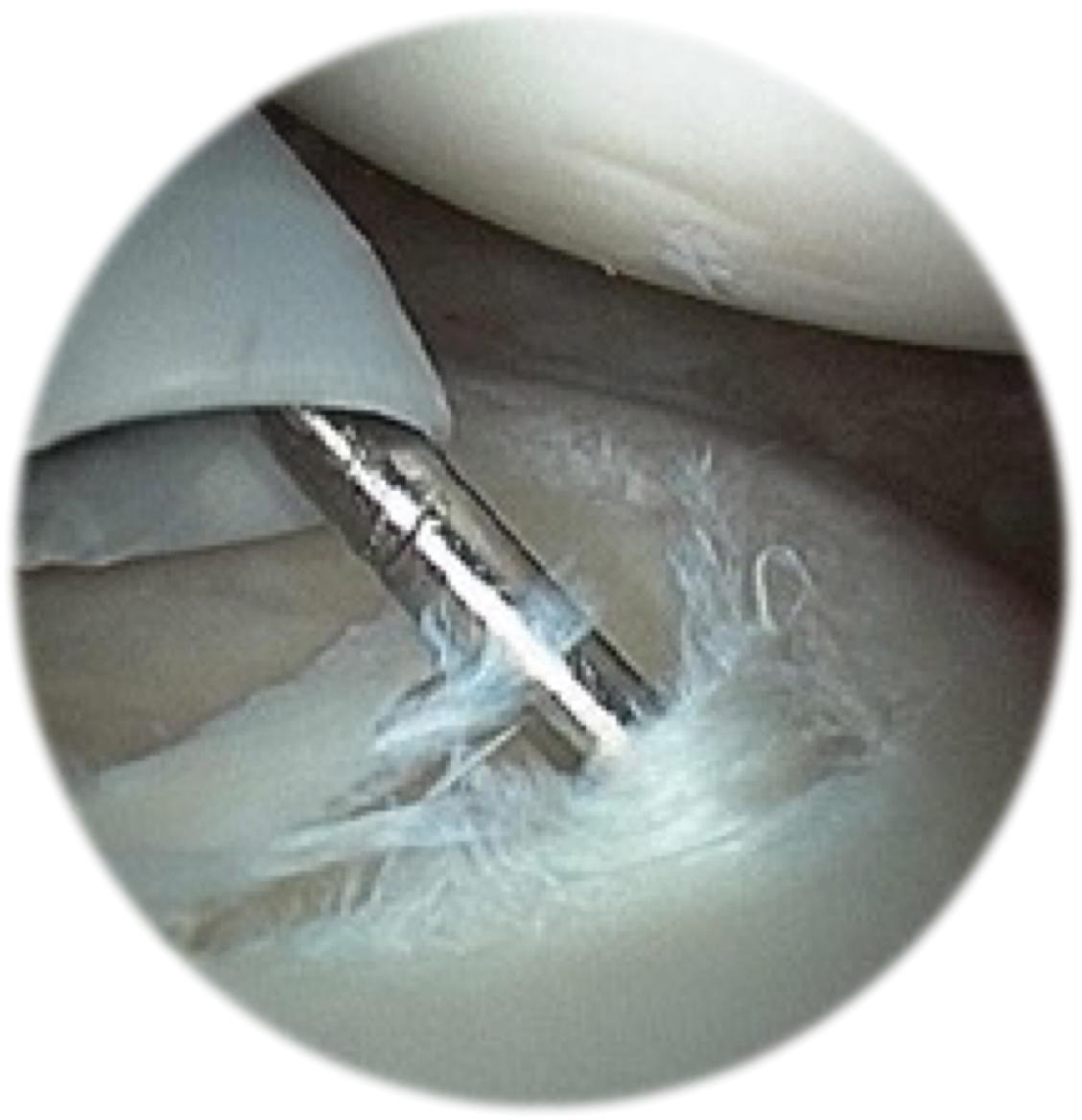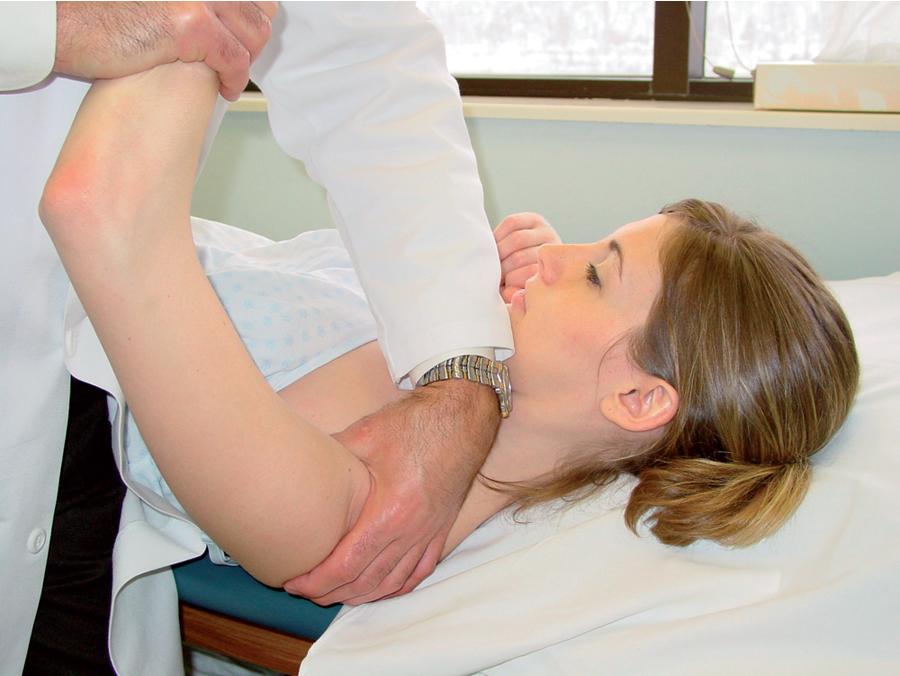Physical Address
304 North Cardinal St.
Dorchester Center, MA 02124
Although increasingly recognized, posterior shoulder instability is relatively uncommon when compared with anterior shoulder instability. A thorough history and physical examination are imperative, with most patients having no specific traumatic event but rather repetitive microtrauma being the cause of pathology. Pain is typically the main symptom. If nonoperative treatment fails, arthroscopic posterior capsulolabral repair has been shown to result in excellent outcomes and return to sport, with American football players having the best outcomes and throwers being slightly more unpredictable. Risk factors for surgical failure include decreased glenoid bone width, rotator cuff injury, female gender, and the use of less than three anchors.
Nonoperative treatments should first be attempted, including physical therapy with avoidance of provocative activities.
Patients with generalized ligamentous laxity and posterior shoulder instability should fully exhaust a rehabilitation program before surgical treatment is considered.
Arthroscopic posterior capsulolabral repair results in excellent outcomes and return to play at midterm follow-up; however, decreased glenoid bone width, female gender, rotator cuff injury, and the use of less than three anchors are risk factors for surgical failure.
Throwing athletes have a slightly less predictable outcome after surgery, and American football players have the most reliable positive results.
The authors prefer the lateral decubitus position during arthroscopy to allow better access to both the anterior and the posterior labrum.
Placing the shoulder in 10 pounds of traction in the position of 45 degrees of abduction and 20 degrees of forward flexion displaces the humeral head anteriorly and inferiorly, bringing the posterior labrum into view.
The authors recommend the posterior portal be placed 1 cm lower and 1 cm more lateral than a typical viewing portal to allow for the ideal angle for anchor placement.
Patient-specific capsular plication should be done with the labral repair based on tissue quality and activity with suture anchors.
Knotless anchors should be used when possible to minimize risks of cartilage wear; in addition to these constructs being faster, they also have greater pull-through strength and allow more anatomic repair.
A 7 o’clock portal can be helpful for placement of anchors near the 6 o’clock position.
A small percutaneous posterior portal should be considered when using a 7 o’clock portal to minimize injury to the native capsule.
Closure of the posterior capsular rent created by the surgical cannulas is recommended.
Suture anchors should be used for capsulolabral repair.
Difficulty in the placement of suture anchors can be encountered if the posterior portal is located too far superior or medial in the posterior capsule.
A spinal needle can be used to help determine the appropriate location of the 7 o’clock portal with the ideal capsular entry being 1 cm lateral to the glenoid rim and at a 45-degree angle.
If the posterior capsule is not closed, widening of portal holes can occur and lead to capsular insufficiency.
Posterior shoulder instability is relatively uncommon when compared with anterior instability with an incidence range from 2% to 10% of shoulder instability cases. History and physical examination findings have improved diagnostic accuracy for this problem; however, greater physician knowledge and education are still needed. Surgical treatment has progressed from open suture only procedures to precise and patient-specific arthroscopic knotless anatomic suture anchor repair. Further knowledge regarding risk factors for posterior shoulder instability and failure of its surgical treatment is still necessary.
Although posterior shoulder injuries range from traumatic to locked posterior shoulder instability, athletes most frequently have pathology secondary to repetitive microtrauma leading to recurrent posterior subluxation (RPS). RPS commonly occurs in overhead throwers, baseball hitters, golfers, tennis players, butterfly and freestyle swimmers, paddling sport athletes, weightlifters, rugby players, and football lineman, among others. The more common cause of RPS is repetitive microtrauma, typically resulting from posterior capsular attenuation and posterior labral tears. Regardless of the type of athlete, patients with RPS often have somewhat vague and ambiguous complaints of diffuse pain and shoulder fatigue without a distinct complaint of instability, making this diagnosis difficult.
Throwers have a different mechanism of posterior shoulder injury which includes an avulsion of the posterior capsulolabral complex (PCLC) or a labral flap tear. Multiple mechanisms leading to these injuries can occur in throwers, including deceleration and eccentric load events leading to repetitive microtrauma. Another mechanism occurs when patients initially have a tight posterior inferior capsule (GIRD: glenohumeral internal rotation deficient), which leads to repetitive microtrauma after ball release, and thus progressive tearing occurs. Another common pathology seen in throwers is a tear beginning at the posterior superior labrum (2b superior labral anterior-posterior [SLAP]) which progresses inferiorly, comparable with a tension band, leading to a split in the labrum ( Fig. 9.1 ). A more dynamic pathology involves an imbalance of a weak or contracted pectoralis major muscle, which allows the latissimus to pull the humeral head posteroinferiorly. Mechanical symptoms or pain during follow-through is the typical complaint in this population. Like other athletes, instability is not the predominant issue. In those with a dynamic muscle imbalance, pain is typically seen at or just before ball release. ,

Despite being less common, traumatic injury does occur, typically from a direct blow to the anterior shoulder or indirect forces that couple shoulder flexion, internal rotation, and adduction. The classic teaching for the most common indirect causes is accidental electric shock and convulsive seizures, although these are relatively uncommon in the general population. Recurrent or locked posterior shoulder dislocations from macrotrauma are rare in the athletic population. Typically, secondary to incomplete radiographic studies and a failure to recognize posterior shoulder prominence and mechanical block to external rotation, locked posterior dislocation may be overlooked in up to 80% of situations, particularly in the emergency department. Concomitant pathologies are common with posterior shoulder instability and include reverse Hill-Sachs lesions, reverse bony Bankart lesions, capsular ligament avulsions, excessive humeral or glenoid retroversion, glenoid hypoplasia, or glenoid bone loss.
To appropriately diagnose posterior shoulder instability, the clinician must take a thorough history and perform a thorough physical examination in addition to maintaining a high index of suspicion. A history of a posterior dislocation requiring formal reduction is more obvious; however, patients with RPS typically have more subtle findings. The majority of patients with RPS primarily report pain with specific activities, particularly in the provocative position (90 degrees of forward flexion, adduction, and internal rotation), more often than instability. Bernhardson et al. compared groups of anterior and posterior instability and found that those with posterior shoulder instability typically had no identifiable injury, with pain as the primary complaint.
Knowledge of the athlete’s sport, position, and training regimen is critical in deducing the pathogenesis and specific pathology associated with RPS. An inquiry should also be made regarding mechanical symptoms, specifically clicking, clunking, or crepitation with motion. Often this crepitus can be reproduced during examination and is caused by discrete posterior capsulolabral pathology .
Inspection for skin dimpling, atrophy, and scapular motion
Active and passive range of motion
Palpation for tenderness (especially at the posterior glenohumeral joint)
Strength testing
Evaluation for impingement
Assessment for generalized ligamentous laxity (9-point Beighton scale)
Stability testing
Load and shift test for anterior and posterior translation ( Fig. 9.2 )

Sulcus sign (both in neutral and external rotation) for inferior translation
Sulcus sign graded as 3+ that remains 2+ in external rotation is pathognomonic for multidirectional instability (MDI)
Specific tests
Become a Clinical Tree membership for Full access and enjoy Unlimited articles
If you are a member. Log in here